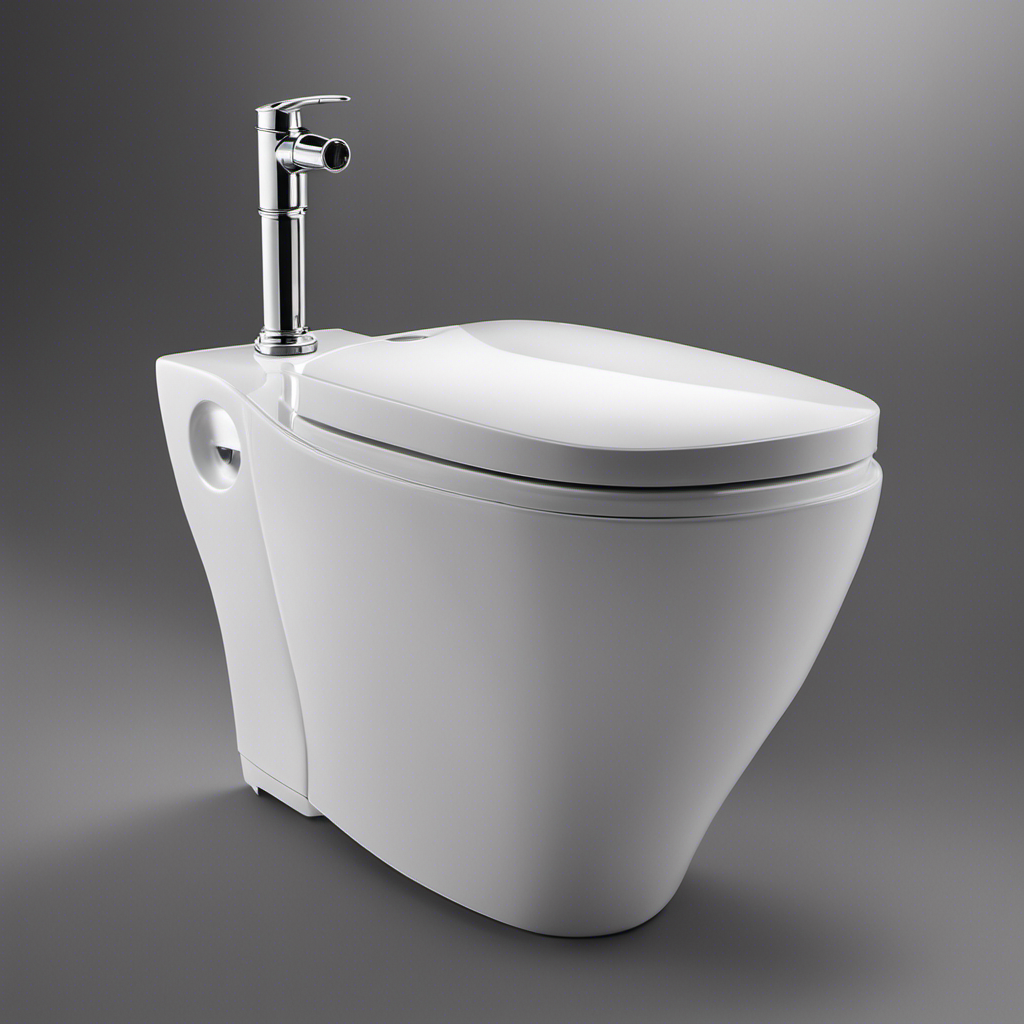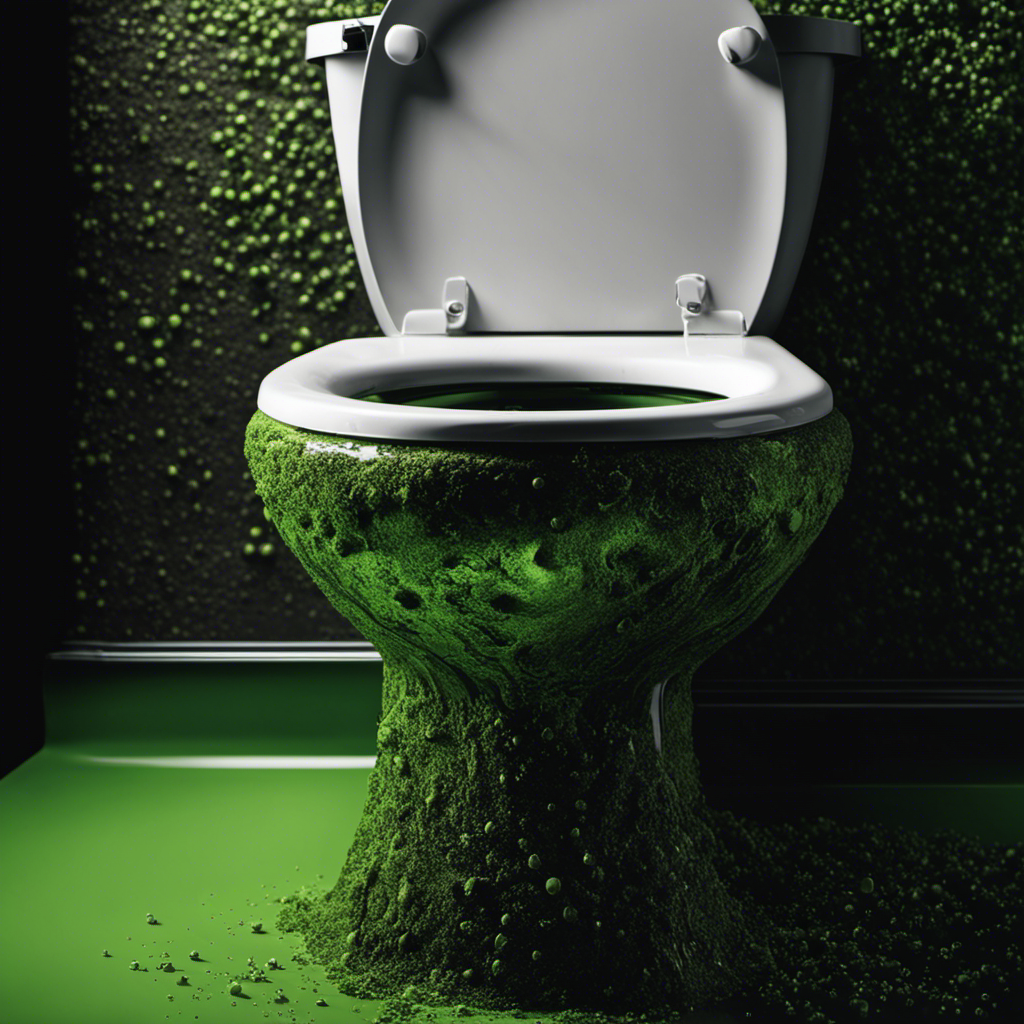Have you ever been woken up in the middle of the night by the sound of a running toilet? It can be both frustrating and concerning.
In this article, I will delve into the common causes of a toilet running and provide you with the technical knowledge to resolve the issue. From problems with the flapper valve to faulty float arms, we will explore the various components that can lead to this annoying problem.
So, let’s get started and put an end to that constant running water!
Key Takeaways
- Flapper valve issues, such as being faulty, damaged, or worn out, can cause a toilet to run.
- Fill valve problems, such as malfunctions or being clogged or worn out, can also contribute to a running toilet.
- Water pressure issues, such as low water pressure affecting the fill valve performance, can be a cause of a toilet running.
- A leaky toilet tank, caused by a faulty flapper valve or a cracked toilet tank, can result in a toilet running.
Common Causes of Toilet Running
One common cause of your toilet running is a faulty flapper valve.
The flapper valve is a small rubber or plastic part that seals the opening at the bottom of the toilet tank. It is responsible for controlling the flow of water into the toilet bowl.
If the flapper valve is damaged or worn out, it can cause water to constantly leak from the tank into the bowl, resulting in a running toilet.
To troubleshoot toilet leaks and ensure proper toilet tank maintenance, it is important to check the condition of the flapper valve regularly.
In the next section, we will discuss the problems that can arise with the flapper valve and how to fix them.
Problems With the Flapper Valve
If you’re experiencing a constantly running toilet, the most common culprit might be problems with the flapper valve. The flapper valve is a crucial component of the toilet that controls the flow of water from the tank to the bowl. When it malfunctions, it can lead to water continuously running and wasting.
To troubleshoot flapper valve problems, consider the following:
-
Inspect the flapper: Check if the flapper is worn out, damaged, or misaligned. If so, it may not create a proper seal, causing water to leak into the bowl.
-
Clean the flapper: Sometimes, debris and mineral deposits can accumulate on the flapper, preventing it from closing tightly. Clean the flapper with a gentle brush or cloth to remove any buildup.
-
Adjust the chain: Ensure that the chain connecting the flapper to the flush handle is properly adjusted. If it’s too loose or too tight, the flapper may not close completely or open fully.
Regular toilet flapper maintenance and timely troubleshooting can help resolve running toilet issues, prevent water wastage, and save you from potential costly repairs.
Issues With the Fill Valve
When it comes to toilet malfunctions, two common issues that can arise are fill valve malfunctions and water pressure problems.
Fill valve malfunctions can occur when the valve is clogged or worn out, leading to inconsistent or improper filling of the tank.
On the other hand, water pressure problems can cause issues with the fill valve’s performance, as low water pressure can result in slow or incomplete tank refills.
These two key points will be discussed in detail to help troubleshoot and resolve any fill valve or water pressure problems in toilets.
Fill Valve Malfunctions
To fix a toilet that won’t stop running, you’ll need to check if the fill valve is malfunctioning. The fill valve is responsible for regulating the water level in the tank and refilling it after each flush. If the fill valve is faulty, it can lead to continuous running water in the toilet.
Here are some signs of a faulty fill valve:
- Constantly running water in the toilet bowl
- Water leaking from the tank into the bowl
- Inadequate water filling after a flush
To troubleshoot the fill valve, you can try adjusting the water level, checking for any blockages, or replacing the fill valve altogether if necessary. By addressing these issues, you can ensure that the fill valve is functioning properly and prevent water wastage.
Now, let’s move on to another potential cause of a running toilet: water pressure problems.
Water Pressure Problems
Water pressure issues can contribute to a toilet that won’t stop running. Low water pressure can prevent the fill valve from fully closing, causing water to continuously flow into the tank. Troubleshooting water pressure problems can help resolve this issue. Here are some common causes and solutions:
| Possible Cause | Solution |
|---|---|
| Clogged water supply line | Clear the blockage or replace the supply line |
| Faulty pressure regulator | Adjust or replace the pressure regulator |
| Partially closed valve | Open the valve fully |
| Cracked or leaking pipes | Repair or replace the damaged pipes |
| Municipal water supply issues | Contact your water provider for assistance |
Leaky Toilet Tank
When it comes to a leaky toilet tank, there are a few key culprits that can cause the problem.
One possible issue is a faulty flapper valve, which can prevent the tank from properly sealing and cause water to continuously leak into the bowl.
Another potential cause is a cracked toilet tank, which can lead to water seeping out and causing a constant leak.
Additionally, a loose fill tube can also contribute to a leaky toilet tank by allowing water to escape from the tank instead of filling it properly.
Faulty Flapper Valve
You can easily fix a faulty flapper valve by replacing it with a new one. The flapper valve is a crucial component in a toilet’s flushing mechanism. When it becomes worn out or damaged, it can cause the toilet to run continuously, wasting water and increasing your water bill.
To replace the flapper valve, follow these steps:
- Shut off the water supply to the toilet.
- Drain the tank by flushing the toilet and holding down the handle to remove as much water as possible.
- Remove the old flapper valve by detaching the chain and unscrewing it from the flush valve.
- Install the new flapper valve by attaching it to the flush valve and reconnecting the chain.
- Turn the water supply back on and test the toilet for any leaks.
Regular toilet maintenance, including flapper valve replacement, can help prevent water wastage and keep your toilet functioning properly.
Cracked Toilet Tank
One way to address a cracked toilet tank is by replacing it with a new one. A cracked toilet tank can lead to leaks and water damage if not addressed promptly. There are several signs that indicate a cracked tank, such as visible cracks or fissures, water pooling around the base of the toilet, or a constant running sound even when the toilet is not in use. If you notice any of these signs, it is important to take action and repair the cracked tank as soon as possible. Neglecting the issue can result in further damage and higher repair costs. To help you identify the signs of a cracked toilet tank, here is a table summarizing the key indicators:
| Signs of a Cracked Toilet Tank |
|---|
| Visible cracks or fissures |
| Water pooling around the base |
| Constant running sound |
Loose Fill Tube
The loose fill tube can cause water to overflow from the toilet tank. When the fill tube becomes loose or disconnected, it can lead to an excessive flow of water into the toilet bowl. This can result in a clogged drain and eventually cause the toilet to overflow. It is important to address this issue promptly to prevent water damage and potential plumbing problems.
To fix the loose fill tube, follow these steps:
- Turn off the water supply to the toilet.
- Locate the fill tube connected to the fill valve.
- Reattach or tighten the fill tube to the overflow pipe.
Regular maintenance and inspection of the fill tube can help prevent toilet overflow and ensure proper functioning of the toilet system. If the issue persists or if you are unsure how to fix it, it’s recommended to consult a professional plumber.
Faulty Float or Float Arm
If your toilet keeps running, it’s likely due to a faulty float or float arm. These components play a crucial role in the proper functioning of the toilet tank.
The float is a hollow plastic or metal ball that floats on the surface of the water in the tank. When the water level rises, the float rises with it and signals the fill valve to shut off. However, if the float is damaged or misaligned, it may not rise properly, causing the fill valve to remain open and the toilet to continuously run.
Similarly, the float arm, which is connected to the float, can become bent or broken, preventing the float from working effectively. To fix this issue, you can adjust the float arm or replace the float altogether.
Regular toilet tank maintenance and troubleshooting toilet issues can help prevent these problems and ensure a properly functioning toilet.
Malfunctioning Toilet Flush Handle
When the toilet handle malfunctions, it can prevent the toilet from flushing properly. This can be a frustrating issue to deal with, but with some troubleshooting, it can be resolved.
Here are some steps to help you fix a malfunctioning toilet flush handle:
-
Check the chain: Sometimes, the chain connecting the handle to the flapper can become loose or tangled. Ensure that the chain is properly connected and has the right amount of slack. If it’s too loose, adjust it accordingly.
-
Replace the chain: If the chain is damaged or broken, it may need to be replaced. You can easily find a replacement chain at a hardware store.
-
Clean or replace the handle: The handle itself can also become dirty or worn out over time. Clean it thoroughly or consider replacing it if necessary.
Problems With the Toilet Flush Valve
One common issue with a malfunctioning toilet flush valve is a constantly running toilet. The toilet flush valve is a crucial component of the toilet flush mechanism, responsible for controlling the flow of water after each flush. When the flush valve malfunctions, it can prevent the toilet from properly sealing, causing water to continuously flow into the toilet bowl. This not only wastes water but can also result in higher water bills.
To resolve this issue, there are several toilet running solutions that you can try. Firstly, check if the flush valve is properly aligned and not damaged. If it is damaged, it may need to be replaced. Additionally, adjusting the water level in the toilet tank and ensuring the flapper is functioning correctly can also help resolve the problem.
Conclusion
In conclusion, there are several common causes of a running toilet. These include problems with the flapper valve, fill valve, tank, float or float arm, and the flush handle.
It is important to address these issues promptly. By doing so, you can prevent water waste and potential damage to your bathroom.
While some may argue that fixing a running toilet is a complex task, it can actually be a relatively simple DIY project. With a bit of knowledge and some basic tools, you can tackle this issue yourself and save money on plumber fees.










